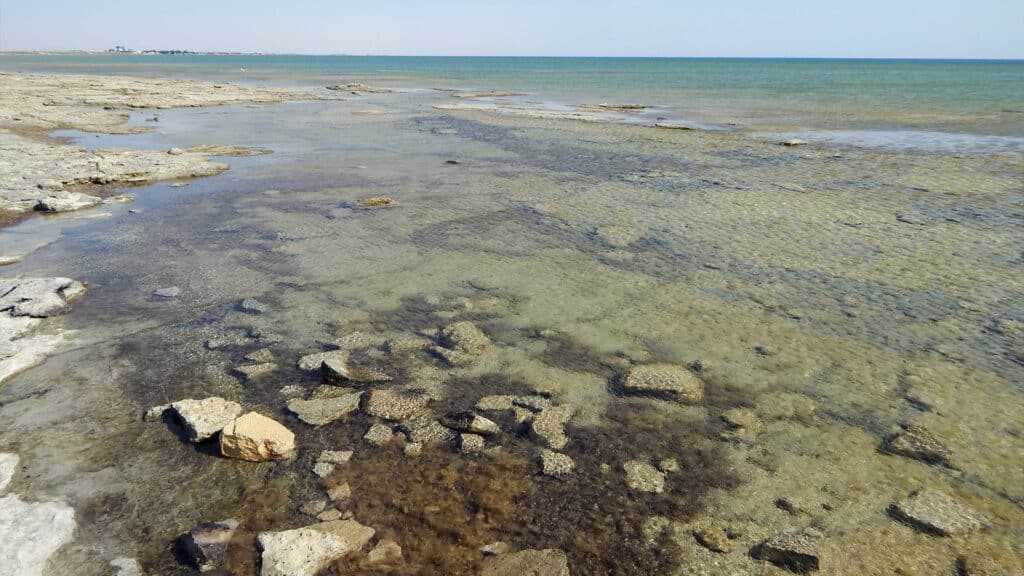
The Caspian Sea, the world’s largest inland body of water, has reached its lowest level in recorded history, dropping below minus 29 meters based on the Baltic height system (BHS-77). The sharp decline has particularly impacted the shallow northern part of the sea, which borders Kazakhstan and Russia, according to a report by the TASS news agency, citing the Volga-Caspian branch of the Caspian Fisheries Research Institute (CaspNIRKh).
The primary cause is a reduced inflow from the Volga River, which supplies about 80% of the freshwater entering the Caspian Sea. Since 2020, sea levels have dropped nearly 80 centimeters. In recent years, the Volga’s annual discharge has declined to between 210 and 232 cubic kilometers, below the historical average of 250 cubic kilometers.
Making matters worse, climate change and rising temperatures are accelerating evaporation. Meanwhile, rivers that feed the Caspian Sea are increasingly used for irrigation, industry and municipal needs.
The falling water levels threaten the region’s ecosystem, particularly in the northern basin, where vast areas of seabed are now exposed. This loss of habitat is harming marine life and reducing the sea’s surface area. In 2024, the Volga’s flow increased slightly to 232 cubic kilometers, slowing the rate of decline. However, scientists estimate a consistent annual flow of about 270 cubic kilometers is needed to restore the sea to levels seen between the 1970s and 1990s.
Russia’s Ministry of Natural Resources is developing a program to address the sea’s retreat. Experts are working on mitigation strategies and ways to adapt economic activities to the changing environment. Kazakhstan, one of the five Caspian littoral states, is also affected, underscoring the need for regional cooperation.
In early July, Kazakh videographer Aday Myrzatay posted a time-lapse video on Instagram comparing the sea’s shoreline in 2013 to its state in 2025. The footage, viewed more than 1.5 million times, starkly illustrates the extent of the shallowing.

